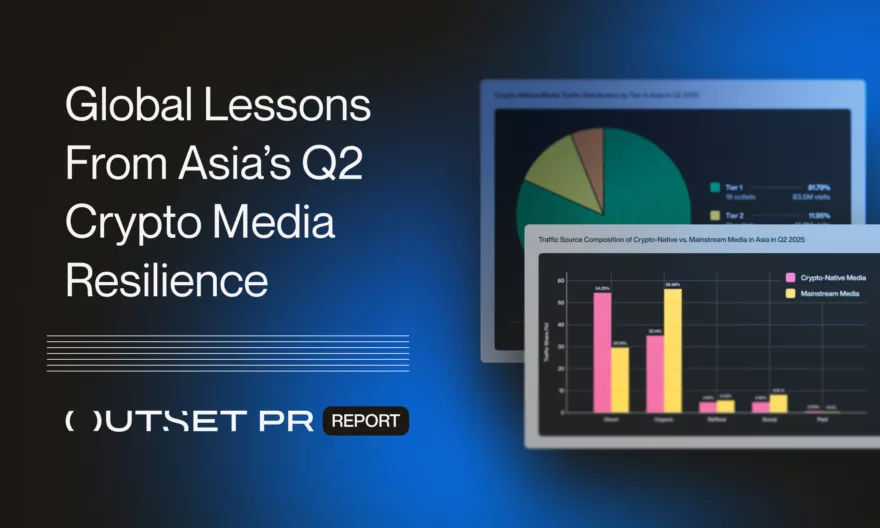CBDCs explained: How could they impact global finance?

Central bank digital currencies (CBDCs) are increasingly becoming the forefront of financial discussions. As of 2023, about 130 countries, representing 98% of global GDP, are exploring the implementation of CBDCs. This piece delves into the specifics of CBDCs, benefits, and challenges and offers a comprehensive view of the current CBDC landscape.
Dive into the realm of finance today, and one term you’re bound to encounter is central bank digital currencies (CBDCs).
Imagine these as digital alter-egos of our well-known physical cash, meticulously minted and regulated by central banks. Many see them as a safe haven in the tumultuous sea of crypto assets, offering an element of security that some find comforting.
CBDCs are not a recent fad. They’ve been on the stage of financial innovation for more than three decades. The year 1993 saw the Bank of Finland create the Avant smart card, an electronic form of cash that stands as the world’s first CBDC, albeit short-lived.
However, CBDCs have piqued global interest in recent years, propelled by technological advancements and the declining use of physical cash. Today, central banks worldwide are assessing their potential benefits, especially their ability to streamline and secure payment systems.
What are CBDCs, and how do they work?
CBDCs are an advanced form of digital currency brought to life by a country’s central bank. Like the physical cash we’re used to, CBDCs are a legal tender but exist only in digital form. They maintain their value equivalency with the nation’s fiat currency, distinguishing them from independent cryptocurrencies like Bitcoin (BTC) or Ether (ETH).
CBDCs are supposed to be the central bank’s answer to our society’s evolving financial needs, blending the convenience of digital transactions with the stability of a central authority.
When a CBDC is issued, it’s equivalent to a physical unit of the nation’s currency. Let’s take a digital dollar as an example: just like its physical counterpart, it is backed by the full faith and credit of the government.
However, unlike physical cash, CBDCs enable seamless digital transactions without the need for traditional banking infrastructure. Instead, these transactions could be facilitated through blockchain technology or other distributed ledger technology (DLT).
Types of CBDCs and their use cases
The operation of a CBDC depends on its type. Primarily, there are two types of CBDCs: wholesale and retail.
Wholesale CBDCs
Wholesale CBDCs, utilized by financial institutions, work similarly to reserves held in a central bank. An institution is granted an account in which funds can be deposited, and the central bank can influence lending and interest rates through these accounts.
Wholesale CBDCs operate on permissioned blockchains and aim to enhance the speed, security, and transparency of high-value payments, streamline the financial system, and foster financial stability.
Wholesale CBDCs are essentially digital representation of central bank money. They are built to provide a safe and reliable settlement infrastructure for wholesale financial activities.
Retail CBDCs
Retail CBDCs are digital currencies issued by central banks that cater to the general public for day-to-day transactions. Unlike wholesale CBDCs targeting financial institutions, retail CBDCs are designed to be accessible to individuals and businesses for various payment purposes.
Retail CBDCs, used by consumers and businesses, have the advantage of eliminating the risk of intermediaries. This means, for instance, there is no danger of a private digital currency issuer going bankrupt and customers losing their assets.
The main goal of retail CBDCs is to promote financial inclusion and stability. They also aim to reduce the costs and risks linked with current financial systems and cryptocurrencies.
Advantages of CBDCs
There are several advantages associated with CBDCs:
Quick and smooth transactions
CBDCs can speed up transactions and make them smoother. This is because they use digital infrustructure, which can also improve systems for sending money abroad. This means that money can be sent almost immediately and is available straight away.
Helping the unbanked
CBDCs can reach those who don’t have access to regular banking services. They don’t need a normal bank setup, so they can help people and businesses who don’t usually use banks.
Better control of monetary policy
Because they’re a digital form of a country’s regular money, CBDCs can help banks manage their money policies better. This could mean more effective ways to manage things like inflation, interest rates, and other important factors for keeping the economy stable and growing.
Reduced costs
Moving to digital could lower the costs of printing, storing, and moving physical cash. CBDCs can also make transactions simpler, which could mean less need for middlemen in payment systems, and cheaper transactions for users.
More secure and private
CBDCs could enhance transaction security and user privacy. Digital transactions can be designed to minimize fraud and identity theft risks, providing users with a secure and private means of executing transactions.
Reducing illicit activities
CBDCs could make it harder for activities like money laundering and tax evasion to happen by making transactions trackable and auditable. The clear nature of digital transactions means that all financial activity is recorded and can be watched, which can make it harder for these illegal activities to go undetected.
Simplified tax collection
CBDCs could make collecting taxes easier and more efficient by recording all transactions digitally. Being able to track transactions easily could help improve tax compliance and lower tax evasion.
Disadvantages of CBDCs
Fewer jobs in traditional banking
CBDCs might lessen the need for traditional middlemen, such as banks. This shift could mean job losses in these areas and could even slow economic activity.
Risk of bank runs
Since CBDCs can be seen as safer than private bank deposits, a sudden spike in demand could lead to bank runs. This is when lots of customers take out their deposits at the same time, which could cause problems in the digital financial system.
Need for tech investments
Moving to CBDCs would require a large investment in tech infrastructure. The cost and complexity of creating and keeping this infrastructure could be hard for some countries, especially those that are still developing.
Risk of cyber attacks
Like all digital systems, CBDCs are at risk of cyber attacks and hacking. Even though they offer increased security, the risk can’t be removed completely, meaning strong cybersecurity measures are needed.
Privacy breaches and restrictions
Depending on how they are set up, CBDC systems could risk user privacy. This could lead to worries about surveillance and misuse of data.
With CBDCs, governments may have the ability to add conditions to the use of digital currency. This could include setting expiry dates or even restricting purchases deemed undesirable. Some experts highlight this as a potential risk, warning of the possible implications for personal freedom and autonomy in financial decisions.
Challenges with cross-border transactions
While CBDCs can make local transactions easier, setting up cross-border transactions is challenging. This includes bringing together regulations across different countries and jurisdictions.
No physical cash backup
CBDCs rely totally on digital infrastructure. Not having physical cash as a backup could cause significant problems during power outages, network disruptions, or other technical issues.
Which countries support CBDCs in 2023?
The CBDC landscape of 2023 is nothing short of dynamic. 130 countries, representing a whopping 98% of global GDP, are exploring the development of CBDCs.
To put this into perspective, back in May 2020, a mere 35 countries were considering a CBDC. Now, a record 64 countries are in an advanced exploration stage, including development, pilot, or launch.
Let’s zero in on the G20 countries, 19 of which are now in the advanced stage of CBDC development. These nations aren’t just exploring; they’re actively engaging. Nine countries are already piloting their digital currencies, showing substantial progress and investment in these initiatives in 2023.
From this global cohort, 11 countries have fully launched a digital currency. Notably, China’s pilot extends to 260 million people and is being tested in over 200 scenarios, encompassing public transit, stimulus payments, and e-commerce.
The European Central Bank (ECB) is on track to initiate its pilot for the digital euro, and over 20 other countries are set to leap-piloting their CBDCs in 2023.
Let’s analyze region-wise CBDC progress to get a better understanding of how things are:
China
The People’s Bank of China (PBOC) has embarked on an ambitious journey since 2020, transforming the nation’s payment landscape by digitizing the Renminbi (RMB).
FDI China reported in June 2022 that PBoC intended to channel the e-CNY via select commercial banks such as Agricultural Bank of China, Bank of China, and China Construction Bank, among others.
The digital yuan’s potential for cross-border trade has been recognized by Hong Kong, Macao, and Singapore, agreeing to foster its adoption and circulation on the global stage.
United States
Across the Pacific, the US is also ramping up its efforts in CBDC research. The Federal Reserve, with a working group of representatives from various government agencies, is exploring the potential benefits, risks, and policy implications of a CBDC.
The US CBDC could significantly alter the American payment systems, paving the way for quicker, safer, and more cost-effective methods of payment. Although it might be a few more years until full implementation, anticipation surrounding the US CBDC is growing.
Europe
In Europe, the European Central Bank (ECB) is developing the Digital Euro, a bold initiative aiming to turn the euro into a digital form. The Digital Euro is more than just a technological innovation—it is a means to establish a resilient and secure financial infrastructure that can support advanced technologies such as AI and blockchain.
Despite some challenges, the Digital Euro has garnered substantial public and professional backing, with its official introduction expected by 2026.
Brazil
Turning to South America, the Central Bank of Brazil is gearing up to launch its own CBDC, the digital real, by 2024. The digital real, pegged to Brazil’s national currency, will see a gradual increase in supply over time.
Brazil’s CBDC project aims to achieve widespread adoption by the end of 2024, with the pilot program planned in collaboration with major banks set to launch in 2023.
India
In India, the retail pilot of the central bank digital currency, known as the digital rupee, was launched in December of 2022. The focus was on person-to-person and consumer-to-merchant payments, facilitated via digital wallets on mobile phones.
The reach of the digital rupee extends to major cities like Mumbai, New Delhi, Bengaluru, and Bhubaneswar, instigating a significant shift in the country’s financial landscape.
Thailand
Thailand is also stepping into the CBDC arena, with its digital baht currently under testing. Prominent financial institutions have launched exclusive apps for pilot participants, offering user-friendly digital wallets and QR code readers.
This initiative is in line with the Thai government’s ambition to promote the digital token industry, with further steps including tax waivers for companies issuing investment tokens.
Russia
Shifting our attention to Russia, we find the Central Bank of Russia showing an equally firm resolve to explore the potential of CBDCs. The bank’s first deputy governor announced plans to begin testing the country’s CBDC from April 2023.
The Central Bank of the Russian Federation’s (CBR) CBDC project, the “digital ruble,” has seen swift progress. Initial discussions came to light in 2020, and a regulatory bill was proposed in 2022. By July 2023, the bill successfully passed its final reading in the Duma, the parliament’s lower chamber.
However, according to experts, the full launch of the digital ruble among the broader public isn’t anticipated until between 2025 and 2027.
Japan
The Bank of Japan (BOJ) is making steady progress in its CBDC research. After completing two preliminary phases, the BOJ is now focusing on practical aspects such as setting a maximum limit on CBDC holdings to ensure financial stability.
Although the official issuance of a CBDC remains under deliberation, the Japanese public is being invited to engage in this discussion actively. To encourage this, the BOJ is planning to launch a CBDC Forum.
This platform will enable significant input from the private sector, fostering a thorough understanding of CBDCs and their potential societal implications.
The BOJ aims to make a final decision on its CBDC launch by 2026, adding a layer of anticipation to the CBDC conversation in Japan.
UAE
Finally, in the UAE, the central bank has begun implementing its CBDC strategy, following a successful partnership with R3 and G42 Cloud.
Comprising three main parts, the first phase of this strategy is expected to be completed within the next 12 to 15 months. The UAE’s CBDC promises to transform its financial infrastructure, preparing the region for a digital future.
Looking ahead
The success of Central Bank Digital Currencies (CBDCs) will largely depend on effectively addressing the challenges that come with them and establishing solid systems for their application. It will require banks and governments to work together, focusing on the aspects of security, privacy, and user-friendliness.
Moreover, for CBDCs to contribute to global financial integration, there’s a need for setting international standards and harmonizing regulations.
As more countries delve into and launch their own CBDCs, we might see a rich pool of knowledge and best practices emerging. This may stimulate the development of more streamlined, inclusive, and safe digital payment systems. In the years ahead, keeping a close eye on the advancement of CBDCs worldwide will be crucial for understanding the global financial scene.














